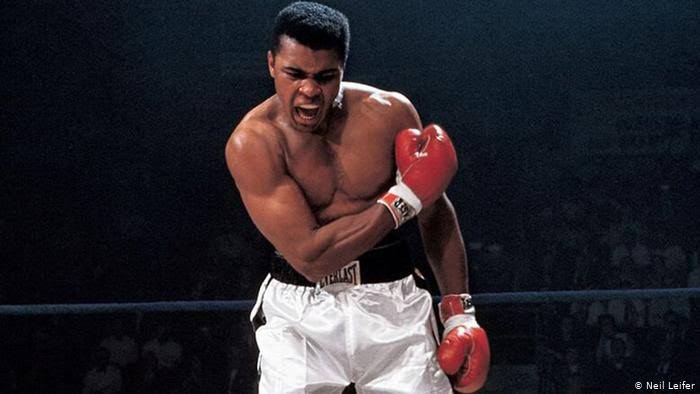Lots of movies have already been made about the legendary boxer Muhammad Ali as a dramatic character. However, City of Ali sets out to focus more on the city where he lived and the people around him — at his funeral.
Unlike The Greatest (1977) in which Ali played himself and Ali (2001) starring Will Smith, City of Ali, directed by Graham Shelby is a feature-length documentary based on the views and opinions of fans, politicians and celebrities about the deceased. That may justify the so many sequences in which his relatives, friends, neighbours talk about Ali as a real hero, but interest wanes.
I wanted to see more about his home, the things that he loved, the music he listened to, his favourite places and how he used to spend his spare time. Loads of interviews, but only one or two exterior shots of his house — as if I’m watching Ali from outside.
May be that’s what the director intended, but for me, I wanted more visual details, not just interviews of people saying goodbye to the champion, who died in 2016.
However, what I liked about the movie is that it is divided into rounds, just like a boxing match. When the bell rings, it takes us to another round of Ali’s life.
The film was made accessible online through an invitation by the US Embassy in Cairo to mark the International Day of Peace.
The documentary starts with round 1 under the title ‘Shaking up the world’. This round shows scenes of the funeral. During the round, Rashida, daughter of Ali, said her father died in Arizona on June 3, but they wanted to postpone the burial until Friday, June 10 to bring the body to Kentucky and to allow more people from all over the world to attend.
The footage in the documentary shows the large number of people. It is said that more than 100,000 people filled the streets of Louisville and about a billion people worldwide watched the event.
This takes us to round 2, which gives a glimpse of how the years before Ali’s death were intense. The film recalls incidents like the San Bernardino unrest and terror attacks, the Michael Brown riots where black people were targeted.
In this round, Craig Melvin, NBC news journalist described people as being “nervous, worried, sad and angry”.
In round 3, we jump to Ali’s childhood at Grand Avenue. This round speaks about how he started learning boxing, which his brother explained was a mean “to defend his rights”.
Ali’s conversion to Islam was a major event in his life. This was briefly discussed in round 4. It gives hints that the champion at that time started to find his identity. In 1967 he refused to join US army to fight in Vietnam. Then, later he became a pop culture icon. The movie showed stills of comic book, songs and toys featuring Ali.
In Round 5, we come back to scenes from the funeral with his wife Lonnie Ali saying: “He wanted his life to be a teachable moment.” I believe that this round is not an addition and somewhat repetitive.
While the documentary contains many interviews of relatives, neighbours and children, round 6, is dedicated to people who were influenced by Ali. It shows testimonies by Natasha Mundkur, a student of Indian origin at University of Louisville, who found a connection with him and Pakistani Dr Muhammad Babar, president of Muslim Americans for Compassion whose grandfather used to watch Mohamed Ali and was inspired by him as a hero.
Round 7 and 8 were much of the funeral. We again see people waiting to say goodbye to the legendary boxer. His son Assad said: “His burial was bigger than any president’s, it was life a parade.”
The two rounds also contain behind the scene preparations for the funeral like the part of how the flowers of funeral were prepared, which was not important to mention.
Finally, I’d say that cutting some scenes and details from the documentary could not affect the whole story. It’d be better if it was shorter and to the point. Also, I wanted it to focus more on the city rather than the funeral.






Discussion about this post